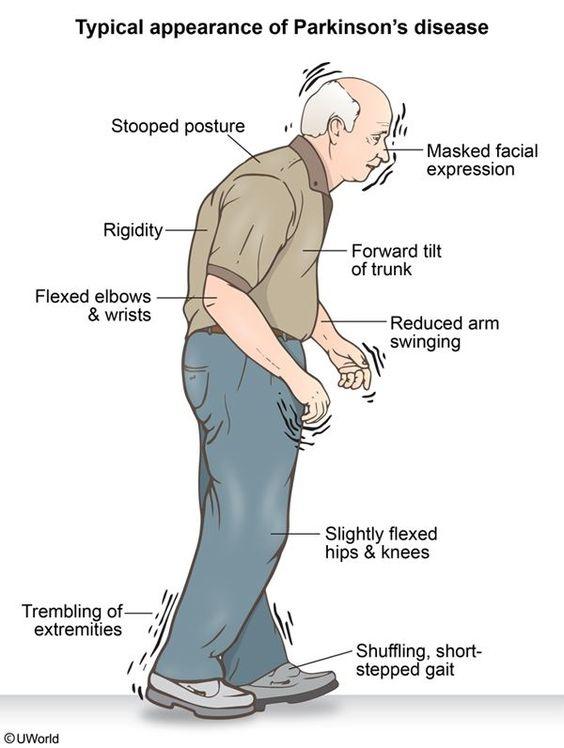The characteristic symptoms of Parkinson’s disease, such as tremor, rigidity and slowed movement, usually start very subtly and, therefore, are not always noticed at an earlier stage. However, over a few months or years, it is common for them to evolve and worsen, becoming more and more evident.
The ideal is to try to identify the disease as soon as possible, to start the appropriate treatment and prevent the accelerated worsening of Parkinson’s, improving the person’s quality of life.
Whenever Parkinson’s disease is suspected, it is advisable to consult a neurologist or geriatrician, if the patient is elderly, to confirm the diagnosis and initiate treatment.
The main signs and symptoms that may indicate Parkinson’s disease are:
1. Tremors
Tremors are one of the main characteristics of Parkinson’s. They happen when a person is stationary, at rest, and improve when moving.
It is more common in the hands, being a wide-ranging tremor that mimics the movement of counting money, but can also appear on the chin, lips, tongue, and legs. It also tends to be asymmetrical, ie on only one side of the body, but this can vary. In addition, it also tends to get worse in situations of stress and anxiety.
2. rigidity
Muscle stiffness can also be asymmetric or be more present in some part of the body, such as arms or legs, giving a feeling of being stiffened, preventing activities such as walking, dressing, opening the arms, going up or down stairs, in addition to difficulty to perform other movements. Muscle pain and excessive tiredness are also common.
3. Slowed movements
It happens when there is a decrease in range of motion and loss of certain automatic movements, such as blinking. Thus, the agility to make quick and ample movements is compromised, which makes it difficult to perform simple tasks, such as opening and closing your hands, dressing, writing or chewing.
Walking also becomes more dragged, slower and with short steps, and there is also a decrease in swinging of the arms, which increases the risk of falls. Over time, there may still be a decrease in facial expressions, difficulty in swallowing and slow writing with small print.
4. Bent posture
Changes in posture are present in the more advanced and final stages of the disease, which starts with a more stooped posture, but, if left untreated, it can progress to joint contraction and immobility.
In addition to a curved spine, other most common posture changes are head tilt, arms held in front of the body, and knees and elbows bent.
5. Imbalance
The stiffness and slowing of the body make it difficult to control reflexes, making it difficult to balance, stand up unaided and maintain posture, with great risk of falls and difficulty walking.
6. Freezing
At times, there is a sudden blockage to initiate movements, known as freezing or freezing, being common to happen while the person walks, speaks or writes.
Other common symptoms in Parkinson’s
In addition to the symptoms mentioned, which are essential to suspect Parkinson’s disease, there are other manifestations that are also common in the disease, such as:
- Sleep disorders such as insomnia, nightmares or sleepwalking;
- Sadness and depression;
- Dizziness;
- Difficulty in smelling;
- Excessive sweating;
- Dermatitis or skin irritations;
- Imprisoned intestine;
- Parkinson’s dementia, in which there is memory loss.
These symptoms can be present in greater or lesser intensity, according to the development of the disease in each person.
What to do if you suspect Parkinson’s
In the presence of symptoms that make you suspect Parkinson’s, it is important to consult a neurologist or geriatrician, so that a complete clinical evaluation can be carried out, with analysis of symptoms, physical examination and examinations to identify if there is another health problem that may be causing these symptoms, since there is no specific test for Parkinson’s disease.
If the doctor confirms the diagnosis, he will also indicate medications that help reduce symptoms, especially tremors and slowing of movement, such as Levodopa, for example.
In addition, it is very important to have physical therapy, and other activities that stimulate the patient, such as occupational therapy and regular physical activity, to maintain a more independent life.
See in more detail how Parkinson’s treatment is done.
